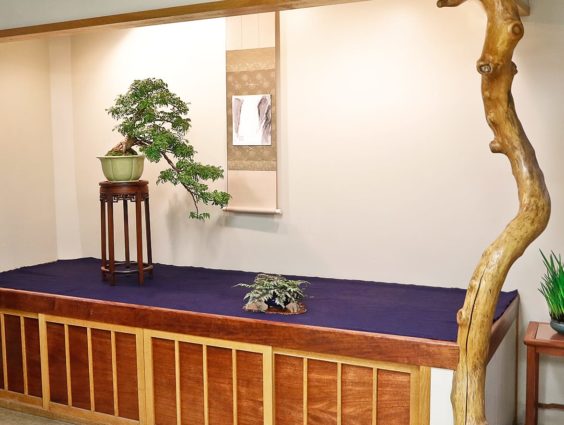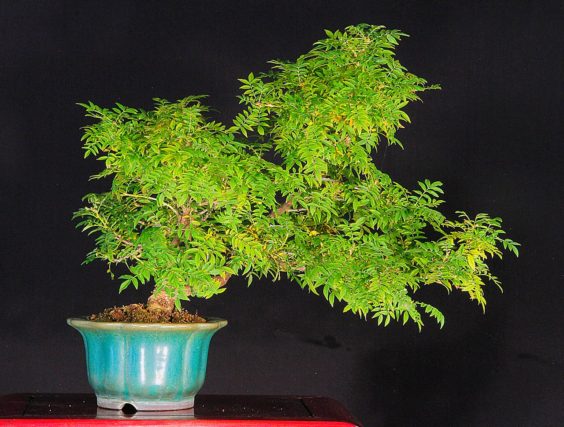This week I received a lot of hints, clues, and suggestions for the botanical name for dwarf wisteria. For everyone who contributed, thank you!
By far the most detailed information came from Bill Valavanis who published an article on the species Millettia japonica ‘Microphylla’ in International Bonsai (2004, No.1).
The article, “The Care & Training of Dwarf Wisteria Bonsai” by Toshihiko Myokan (trans. Craig W. Risser), is a great primer on the variety. It includes photos of mature specimens as well as a detail shot featuring the small white flowers on Boon’s specimen.
One of the more interesting details from the article was that the author mentioned a bonsai hobbyist who planted his millettia in the ground hoping it would help the tree bloom. Although he didn’t get flowers, he found that one branch reverted back to the species, Millettia japonica (Summer wisteria) – a good indication that the tree is a dwarf form of millettia.
Bill also sent along a few photos of dwarf wisteria bonsai that do a good job conveying the size and character of the foliage.
Dwarf wisteria – Millettia japonica ‘Microphylla’
Photo courtesy William N. Valavanis
Dwarf wisteria display
Photo courtesy William N. Valavanis
Dwarf wisteria
Photo courtesy William N. Valavanis
The name Millettia japonica var. Microphylla appears in several databases, including the International Legume Database & Information Service. A number of these sources point to a reference in Flora of Japan, 1965 (p. 573), that describes the plant as a non-flowering variety with the common names Hime-fuji or Mekura-fuji. “Mekura” is Japanese for “blind,” a common appellation for non-flowering plants.
I’m happy to know with relative certainty that the tree is a millettia. I’ll continue to use dwarf wisteria and dwarf millettia as common names, but from here on out, the botanical name will be Millettia.
Subscribe to Bonsai Tonight
New Posts Delivered Every Tuesday and Friday



Keegan says
Can you talk more about care? I’m here in Los Angeles and they seem to push once but briefly and then flounder for the summer months. I have not been able to get them to grow vigorously as you describe. Any tips?
Jonas Dupuich says
Hi Keegan, good question! It generally doesn’t take much to keep dwarf wisteria happy, so I’d start by looking at the soil, water, and fertilizer. General bonsai soil with around 30-50% akadama can work well, and like full-size wisteria, dwarf wisteria like a lot of water. Too much will make them grow extra fast which usually isn’t desirable as new internodes increase with vigor. Fertilizing in spring and fall will help the trees stay green, and fertilizer can help in summer if the tree turns yellow. They like lots of sunshine but would appreciate some afternoon shade if the trees and pots are small.
Those are the basics. If possible, find someone growing the species in southern California and see if they have local tips that might help where you live.